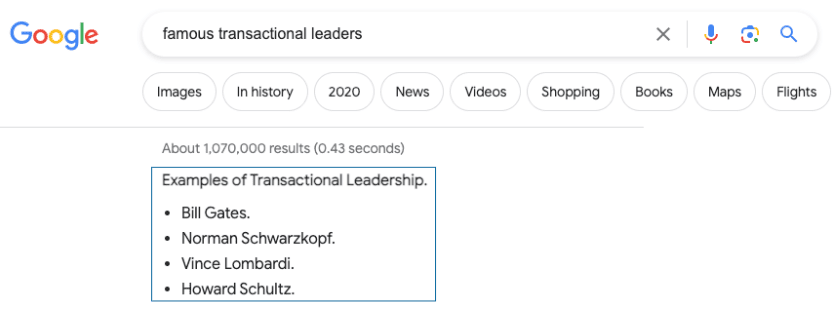Howard Schultz Leadership Style: 5 Traits to Build Starbucks
Howard D. Schultz is an American businessman and author who served as Starbucks’s chairman and chief executive officer from 1986 to 2000, from 2008 to 2017, and interim CEO from 2022 to 2023. Howard Schultz leadership style turned Starbucks, a local coffee store in Seattle in 1986, into the world’s largest coffee house chain and deserves to be on the great leaders list because of serving coffee to millions if not billions every day. We’ve explored Howard Schultz leadership style, 5 traits he used to grow Starbucks, benefits, and flaws.
In this article
📌 Hint: Do not skip this article, you will find FREE Leadership Training resources throughout the article.
Why is Howard Schultz an Important Leadership Figure?
Howard Schultz was born in 1953, in Brooklyn, New York. His father was a truck driver and he expresses that his family was poor. Schultz graduated from Northern Michigan University with a B.A. in communications degree. He started his career as a salesman for Xerox in New York, in 1976. Then, he worked for an equity firm PAI Partners and that is how he interacted with Starbucks.
His unique Howard Schultz leadership style makes him an important leadership figure. Schultz joined Starbucks in 1982 as the director of retail operations and marketing. His marketing strategy has been received both by customers and competitors, and he has succeeded in expanding the Starbucks brand across the United States. Howard Schultz leadership style positioned Starbucks as a social hub rather than just a coffee shop. This has been adopted widely in Seattle, and then in the US.
Starbucks became the largest coffee-house chain in the world primarily following large-scale distribution deals. The company had its IPO (Initial Public Offering) in 1992, under the SBUX stock ticker. This IPO generated 271 million dollars and Schultz used this financing to double the number of Starbucks stores. Today, Starbucks is operating in more than 80 countries with over 35,000 stores with a market capitalization of over 110 billion dollars.
Schultz favors and is a strong believer in power, loyalty, staff training, consistency, employee motivation, and fringe benefits. These characteristics are strongly familiar with the transactional leadership style. Even Google features him as one of the transactional leaders in search results.

Enhance Your Leadership Skills – Executive Leadership Training Program
San Francisco Business School offers an online, self-paced comprehensive executive leadership training program. You can consider enrolling in this program to improve your leadership skills.
5 Traits to Build Starbucks – Howard Schultz Leadership Style
Howard Schultz used many marketing strategies and leadership skills to grow a local coffee store into the largest coffee-house chain. However, 5 traits are the most common traits of his transactional leadership style.
The transactional leadership style assumes that people do things for compensation, rewards, or any material outcomes. Therefore, transactional leaders focus on designing tasks around reward structures, such as promotions, bonus payments, etc. Although it sounds greedy, leaders and managers use transactional leadership and management style in their work. Bill Gates leadership style showed transactional traits as well.
Now, let’s go through the 5 traits of Howard Schultz leadership style.
1- Focuses on Short-Term Goals
You should have heard the three famous theories about motivation: McGregor’s Theory X and Y, Maslow’s hierarchy of needs, and Herzberg’s hygiene factors. These are famous and phenomenal theories about people’s motivation. The common part of these famous theories is, that people can be motivated by material rewards to some degree. If the material compensations are below the average, this makes people demotivated, however, having generous compensation or rewards will not make people very motivated. People look for other motivational factors such as encouragement, relationships at work, self-actualization, etc.
Howard Schultz leadership style focuses on short-term goals. The management tries to accomplish quick wins around a tight schedule. Therefore, instead of building relationships, encouraging team members, and growing the team, people are motivated by rewards. Some people criticize that Schultz resembles the Authoritarian Leadership style as well.
Watch Laura’s 30 Seconds Experience – Executive Leadership Program
Hear from Our Alumni Laura Smith, Head of Design. Laura attended the Executive Leadership Program at SFBS.
2- Rewards and Penalties
The backbone of the transactional leadership style is rewards and penalties. Leadership clarifies its expectations from the beginning with a clear set of goals and targets. Rewards and penalties policies are also declared to the team. While objectives are met, rewards are given to those who deserve them. If there are underperformers or unwanted behavior, the transactional leader will not hesitate to punish them.
3- Howard Schultz Leadership Style Favors Hierarchy
A transactional leadership style requires a clear, rigid, and structured hierarchy. To form rewards and penalties policies, organizations need to ensure that everyone knows their place in the line. Subordinates know that they should not step in outside of their roles and responsibilities.
When you enter a Starbucks store, you will easily recognize the barista, clerk, and other employees and their roles. Your order will be received at most in a few minutes and you will start enjoying your beverage in minutes. This is an outcome of Howard Schultz leadership style developed, improved, and practiced over several years.
Free Online Leadership Skills Training Program
One of the requirements to be a good leader is to improve yourself continuously. The best way to do this is, to enhance your competence through training. Take a step ahead and jumpstart your leadership competence. Enroll in our 1-hour Free Leadership Training program.
4- Minimizes Relationship Building
The goal of the people under transactional leadership is to reach goals and gain rewards. However, this might be at stake to compete against other team members in the team. In other words, the team members in the same team might be the competitors of each other. Respectively, this minimizes the development of personal connections, blocks team-building, and hinders team development.
5- Reactive Rather Than Proactive
Howard Schultz leadership style is reactive, rather than proactive. Transactional leaders make sure that the team follows the rules and standards set by the leadership. While doing this, instead of looking for future problems that might arise, they only react to the cases when they occur. Because they focus on day-to-day work and if they are performed as per the standards and rules. This prevents them from looking at the bigger picture level and anticipating future problems and being proactive.
For instance, during the global crisis of 2008, Schultz returned to Starbucks where he left in 2000. He fired several employees and shuttered hundreds of stores to survive the crisis. Schultz managed several acquisitions of American and Chinese beverage companies, launched a loyalty program, and imposed fair trade standards. His expansion in the Chinese market is spectacular as he entered a market where the customers are dominant tea drinkers. You can read more about the adaptive leadership style.
Benefits and Flaws of Howard Schultz Leadership Style
There are 15 types of leadership styles used commonly by leaders. Each leadership style has trade-offs. The benefits of Howard Schultz leadership style are:
- Maintaining Status Quo: It effective way to maintain the current conditions. In some cases, especially when quick results are expected under tight deadlines, stability is required. Because trying different things requires time and failures are possible. When there is no tolerance for failure, and if quick results are expected, transactional leadership can lead the situation.
- Supports Repetitive Work: The operation of a coffee house is pretty repetitive. If the nature of the work is repetitive, such as production lines, customer support cases, manufacturing, etc, Howard Schultz leadership style can achieve better results. Because the more people succeed, the more the organization will earn, and reward the employees respectively.
- Cost Effective: Transactional leadership is a top-down approach. The leaders set the goals and expectations, and the members follow the rules and standards. The goals are clear, rules and policies are clear, and people know the rewards and penalties policies. Therefore, there will not be a need for intermediary roles to guide people.
- Realizes Short-Team Goals: If there are daily or weekly goals to succeed, a transactional leadership style can help you achieve this. Set the goals and expectations. Declare the rewards and penalties clearly, and let the team reach the short-term goals.
- Fosters Quick Resolution Under Crises and Problems: The ultimate goal of the team is to reach the goals, so they can be rewarded. Great leaders can make the right decisions under pressure quickly. Therefore, when the team faces an issue, the team will be collaborative to fix the issue. Otherwise, the rewards of all team members are at stake. This fosters quick resolution times under crises and problems.
The flaws of Howard Schultz leadership style are as follows:
- Hinders Creativity & Innovation: Howard Schultz leadership style sets the goals and expectations, rules and standards. The rewards and penalties are clear. So, the team does not look for alternative ways to perform their work. This hinders creativity and innovation.
- Limits Relationship Building: Under transactional leadership, in many cases, the people in the team have similar targets, and when they are trying to get the rewards, they compete with their teammates. This is a relationship-building blocker among the team.
- Blocks Personal Initiatives: Howard Schultz leadership style sets clear boundaries for the people. Even if they want to take initiative or more responsibility, there is no room for this. This can lead the employees to think that they are not important to the organization. Also, it limits the self-development of the people.
- Creates High Pressure and Stress: The rule is simple under transactional leadership. Work more, earn more. The nature of trying to accomplish more and more every day can be exhaustive. This can create high pressure and stress among the team. Therefore, it can cause demotivation and reduce the performance of the team over a longer period.
- High Staff Turnover: The teams under transactional leadership are highly competitive, with high standards and goals with tight deadlines. Trying to accomplish these can cause unhappiness in the workplace. In the end, the organization can face a high staff turnover.
Summary
Howard Schultz is an important leadership figure in recent history. His leadership skills, visionary thinking, and marketing strategy turned a local coffee house into the largest coffee chain in the world.
Howard Schultz leadership style demonstrates the characteristics of transactional leadership. Some of his styles resemble authoritarian and adaptive leadership as well.

